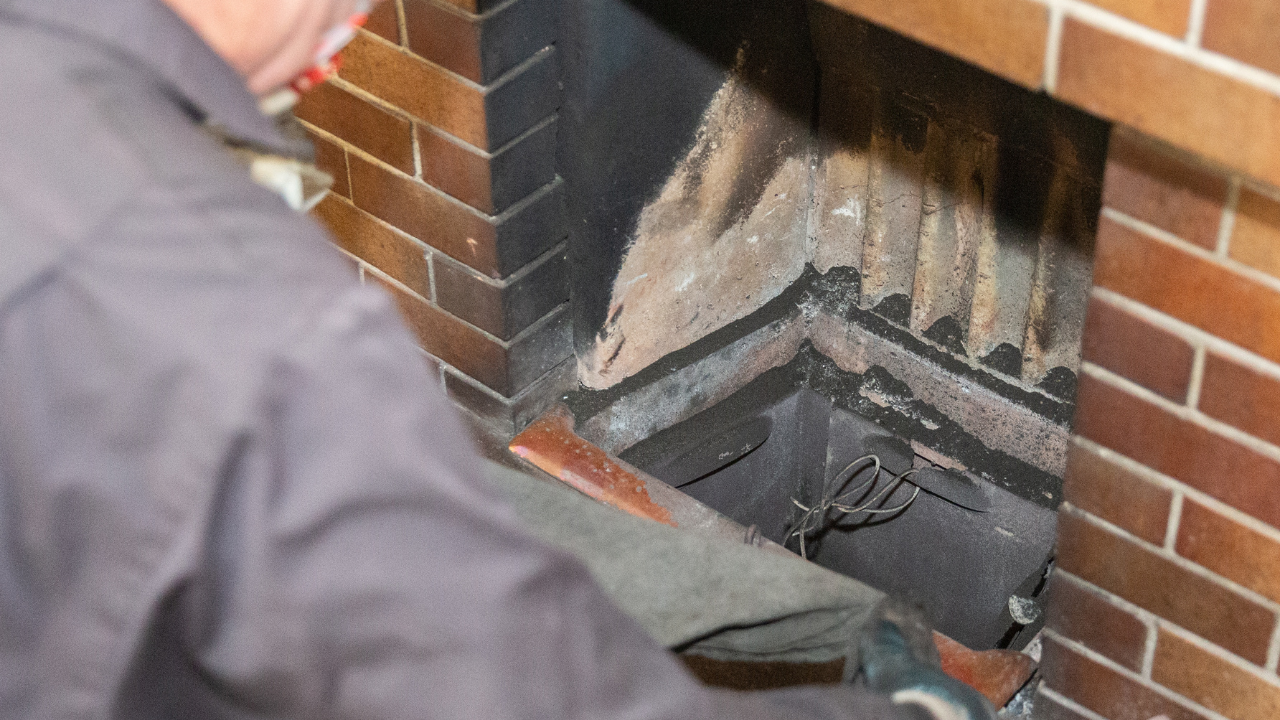A cozy fire in your fireplace can quickly turn dangerous if your chimney isn’t properly maintained. One of the biggest risks is a chimney fire—an event that can cause severe damage to your home in just minutes.
Homeowners often ask: How long can a chimney fire last? The answer depends on several factors, including the amount of creosote buildup, the chimney’s condition, and how quickly the fire is detected.
In this guide, experts from AAA Air Duct Cleaning and your Local Chimney Sweep services explain how long chimney fires last, what causes them, and how regular maintenance or an install chimney liner service can prevent disaster.
What Is a Chimney Fire?
A chimney fire occurs when creosote, a highly flammable substance that forms inside the flue, ignites.
Creosote builds up when smoke, vapor, and unburned wood particles cool and stick to the chimney walls.
Over time, this sticky residue thickens and hardens. When the temperature inside the chimney rises high enough, the creosote catches fire—creating a chimney fire that burns extremely hot and fast.
How Long Can a Chimney Fire Last?
The duration of a chimney fire depends on its intensity and the amount of fuel (creosote) inside the chimney.
-
Short fires: Some last just a few minutes, burning through light creosote deposits.
-
Moderate fires: These can last up to 30 minutes, especially if creosote buildup is heavy.
-
Severe fires: In extreme cases, a chimney fire can burn for over an hour—causing cracks, structural damage, or even spreading to the roof and nearby walls.
According to AAA Air Duct Cleaning, even a short chimney fire can reach temperatures of up to 2000°F. That’s hot enough to crack bricks, melt metal liners, and ignite nearby wood framing.
Signs of a Chimney Fire
Some chimney fires are dramatic, while others burn quietly inside the flue. Knowing the signs can help you react fast.
Loud or visible signs include:
-
A roaring or rumbling sound, like a freight train.
-
Thick black smoke or flames shooting from the chimney top.
-
Sparks or embers falling into the fireplace.
-
Intense heat coming from the firebox or walls.
Quiet chimney fires show fewer symptoms but are just as dangerous. You may notice:
-
Cracked or discolored chimney bricks.
-
A strong, burnt smell even when the fireplace isn’t in use.
-
Ash or soot buildup falling into the hearth.
If you suspect a fire, call emergency services immediately—then contact your Local Chimney Sweep services for a full inspection afterward.
Common Causes of Chimney Fires
-
Creosote buildup: The main cause. It forms when wood burns incompletely.
-
Infrequent cleaning: A dirty chimney traps soot and flammable debris.
-
Blocked flue: Nests, leaves, or twigs can restrict airflow and trap heat.
-
No chimney liner: Without a liner, the chimney wall absorbs more heat and cracks faster.
-
Poor burning habits: Burning wet or unseasoned wood increases creosote formation.
Regular maintenance by AAA Air Duct Cleaning or your Local Chimney Sweep services can help eliminate these risks before they lead to a fire.
How to Prevent a Chimney Fire
You can’t always predict when a fire might happen—but you can take steps to prevent it.
1. Schedule regular cleanings.
Professionals like AAA Air Duct Cleaning use advanced tools to remove soot, ash, and creosote buildup. Annual inspections are essential—especially before winter.
2. Burn only dry, seasoned wood.
Wet or green wood produces more smoke and creosote. Seasoned wood burns cleaner and hotter.
3. Check your chimney cap.
A damaged or missing cap allows rain, leaves, and animals to enter the flue, increasing the chance of blockage.
4. Install a chimney liner.
A chimney liner protects the interior wall from high heat and corrosive gases. It also improves airflow, allowing smoke to escape efficiently. Many homes rely on AAA Air Duct Cleaning to Install Chimney Liners for long-term fire protection.
5. Get a professional inspection.
Even if you clean regularly, a certified Local Chimney Sweep service can detect cracks, warping, or early creosote buildup you might miss.
What to Do If You Have a Chimney Fire
If a fire breaks out:
-
Close the fireplace damper immediately. This helps reduce oxygen feeding the flames.
-
Call the fire department. Don’t try to extinguish a chimney fire yourself.
-
Get everyone out safely. Smoke and carbon monoxide can fill your home quickly.
-
Avoid using the fireplace again until professionals inspect the system.
Afterward, AAA Air Duct Cleaning can evaluate the damage, remove residue, and recommend repairs or a new install chimney liner service if necessary.
The Role of a Chimney Liner in Fire Safety
A chimney liner acts as a protective barrier between the fire and your chimney walls.
Here’s why it’s essential:
-
Prevents overheating: Reduces the risk of chimney cracks caused by high heat.
-
Improves draft: Promotes smoother smoke flow, preventing buildup.
-
Stops corrosion: Protects against moisture and acid damage from smoke.
-
Enhances efficiency: Keeps the fireplace burning clean and even.
If your home has an old or damaged liner, replacing it can dramatically lower the risk of future fires. Local Chimney Sweep services can inspect and recommend the right type—stainless steel, clay, or cast-in-place liners—for your home’s needs.
How Often Should You Clean or Inspect Your Chimney?
Experts recommend:
-
Inspection: Once a year by certified professionals.
-
Cleaning: At least once every 12 months, or more if you use your fireplace frequently.
-
Liner check: Every few years, or sooner if you notice draft problems or cracks.
With regular visits from AAA air duct cleaning, you’ll ensure that your chimney is clean, safe, and efficient year-round.
The Dangers of Ignoring Chimney Maintenance
Neglecting your chimney can lead to more than just fires. Other risks include:
-
Structural damage from high temperatures.
-
Cracked masonry that leaks smoke into living areas.
-
Reduced heating efficiency due to poor airflow.
-
Expensive repairs that could have been avoided.
Routine service from Local Chimney Sweep services is the simplest way to avoid these costly problems.
Final Thoughts
So, how long can a chimney fire last?
It can burn anywhere from a few minutes to over an hour—but even a short fire can cause lasting damage.
The key is prevention. Schedule annual chimney inspections, remove creosote buildup, and install a chimney liner for added safety.
Your fireplace should bring warmth, not danger.
Trust AAA Air Duct Cleaning and Local Chimney Sweep Services to keep your chimney safe, efficient, and ready for use all year long.



